I want to design a circuit capable of controlling the voltage of either a inductive (electrovalve) or resistive (heating cord) load.
I want to have a variable voltage for these loads:
- for the electrovalve (24V, 0.41A, 10W), to be able to power it at full voltage to switch it "on" and then decrease voltage just above the "switch-off" level, to reduce power consumption and heat generation.
- for the heating cord (24V, 2.8A, 64W), to be able to control precisely their temperature.
Few explanations about the components' choice:
- The optocoupler is a ILQ2 because why not.
- R1=1k. Vphotodiode=1.25V and VstatusLED=2.25V, so VR1=5-1.25-2.25=1.5V, so I=1.5/1k=1.5mA which is fine for the Arduino I/O pin
- I chose a MOSFET IRF520nPbF for its ID=10A, which gives some margins for my application, without being too high. If I understand correctly VGS should be between 4V and 20V to switch it ON.
- That is why I chose R1=R2: it gives a VGS=12V which is right in the middle of the 4-20V range.
- However I am not sure about the absolute value of R1 and R2. I put 10k because this is what I found on other sites, but I can't explain why.
- The Schottky SB5100-T flyback diode should be more than enough for my application, and I guess that for the heating cord it is useless but not harmful (?)
Considerations about component's switching time
- Arduino PWM frequency is 490Hz (~2ms) for most pins, climbing to 980Hz (~1ms) for 2 of them.
- ILQ2's rising/falling time is below 5µs --> OK
- IRF520NPbF's rising/falling time is below 50ns --> OK
What do you think about the circuit's design and the component's choice? Did I miss something?
My electronic knowledges are old and weak, the circuit above is basically a copy-paste of small chunks of circuits found on various places on the web...
